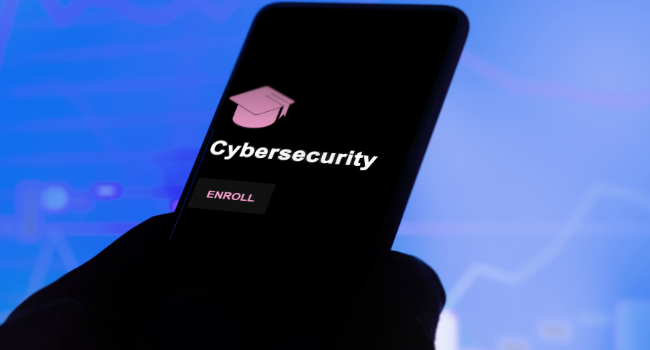
7 Steps to an Effective Cybersecurity Training Regimen
Can your employees spot a phishing attack? Here's how to train them.
Maybe it’s a phishing attack—an innocent-looking email from a company leader or reputable company but generated by a malicious threat actor.
Maybe it’s ransomware or malware—malicious software that rapidly spreads through your system via infected downloads that employees innocently click on.
Maybe it’s weak passwords, insider threats in the form of disgruntled employees, unsecured data or the cause of stolen credentials.
Whatever the root causes, cyberattacks pose significant risk to companies of all sizes from all industries and geographies. The cost of cybercrime rose to an astounding $8 trillion in 2023, and is expected to rise to $10.5 trillion by 2025.
Common Methods of Combatting Cybercrime
These risks and their associated costs do not happen because companies are complacent about protecting their—and their customers’—data. No, they’ve been fighting the good fight for years. But still, the attacks keep coming.
Much of what organizations have been doing to combat cyberattacks makes sense and are certainly already in place, even if only nominally. For instance:
- Building an internal cybersecurity team with the right skills to confront cyber threats. The National Institute of Standards and Technology NICE Cybersecurity Workforce Framework can be a great starting point.
- Identifying internal vulnerabilities that could cross a wide range of competencies and processes including insufficient training, inadequate use of industry standards and regulations, poor communication, and inadequate use of security controls and procedures.
- Providing training to ensure employees are aware of cybersecurity risks and understand their role in helping to identify, block and report those risks.
This serves as an excellent initial step and certainly foundational to forming a cybersecurity posture. Unfortunately, too often these efforts fail for various reasons—generally due to a “one-and-done” attitude toward security training, and lack of an ingrained, organizational security culture.
Taking a Deep Dive to Building an Effective Training Regimen
First, culture is king. Without a healthy security culture, companies are likely to struggle year after year in addressing and overcoming the risks and damage caused by network and software vulnerabilities. This involves creating an environment where cybersecurity is prioritized, and employees are empowered to make informed and proactive decisions about security.
Every department has an important role to play when it comes to helping establish a security culture and working collectively to sustain that culture through ongoing efforts designed to keep security accountability top of mind. Which means devising a plan that ensures your cybersecurity training efforts are attuned to driving positive change.
Here are seven things to consider incorporating into your training regimen:
1. Real-world scenarios and case studies. Hypotheticals don’t have nearly the impact as actual examples of cyberattacks that have occurred and how they could have been prevented. Even better when these examples are from your own organization. When employees—and especially leaders—are willing to share these experiences, it can have a lasting effect.
2. Gamification and competition. Training does not have to entail the “sage on the stage” variety. People love playing games. Including competition, challenges, leader boards, and rewards can boost participation in training sessions.
3. Tabletop exercises and simulations. These can be a great way to engage employees in learning by giving them an opportunity (to work on) and respond to various types of cybersecurity challenges either alone or in teams.
4. Phishing simulations with personalized feedback. We learn best through our own experiences. Phishing and other simulated social engineering simulations can provide feedback results in a safe environment, identifying those individuals most gullible to online social engineering scams who may require special attention via hands-on coaching, to make learning stick.
5. Targeted training for technical vs. non-technical employees. The information needed to train the IT department will be vastly different than the information needed by the sales team—and those differences can extend across the organization. Customizing the training to meet the specific needs of users will help engage their attention and make an impact.
6. Cybersecurity awareness campaigns. Enlist the support and collaboration of your marketing department to run cybersecurity training sessions quarterly to keep messages fresh. Campaigns can include posters, videos, webinars and other learning channels to keep everyone informed.
7. Continuous monitoring and evaluation. What’s working? What’s not? What kind of feedback are you receiving from employees about your training and communication efforts? What do they love and hate? What recommendations do they have for improvement? Ongoing monitoring, evaluation, user feedback and input will keep employees involved and make it clear to them that you care about their needs and preferences.
Training and communication are foundational elements of virtually all cybersecurity training efforts. It’s not all equally effective for all participants, though. By integrating the more focused tactics described above, a more effective training regimen for your workforce can be achieved.